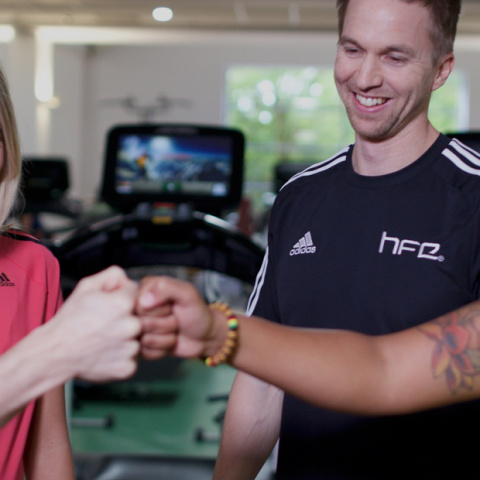Consider a 10k run, that’s 10,000 foot strikes and each strike loads up to 3 times a person’s body weight on their feet. That is a massive cumulative force for a foot to undergo, but it is essentially what it is perfectly designed to do.
If we take an average runner for example, running around 40 kilometers a week would equate to approximately 400,000 foot strikes. If they weight say 60 kg, 600 Newtons x 3 = 1800 newtons; multiply this by 400, 000 (heel strikes) and the magnitude of force the foot has to cope with is simply enormous. It is precisely this reason that people have become interested, and in some cases obsessed, with which part of the foot should hit the ground first.
Before reaching any definitive conclusion, some important principles must be considered; principally, energy can not be created or destroyed, it can only be converted from one form to another. When a person runs, they must transfer their mass from one place to another – the magnitude of the force must remain. What can be changed however is the time for which the force applies, and this is typically achieved through the use of cushioning aids.

If something can be changed, it follows that there will be a product on the market doing precisely this; these products are usually promoted under the guise of ‘reducing injury’ or ‘improving performance’, and in many cases both. Some recent claims have stated that heel striking is unnatural, and has arisen from the use of heavily cushioned training shoes. Is it unnatural to heel strike? Perhaps a more suitable question would be, does heel striking increase the risk of injury?
Anatomy and Function of the Foot
The foot is composed of 26 separate bones which paradoxically integrate to form a stable and mobile structure. The calcaneus is a large dense bone, and sits underneath the talus bone. The talus bone forms part of the ankle joint , which is a hinge joint. Further movement is available however below the ankle at the subtalar joint, which allows the foot to pronate and supinate. All of this motion is available at the rearfoot.
Why does this matter? Pronation gets a bad reputation, but when a foot is pronating it is becoming a mobile adapter and attenuating shock. This is exactly what we want to happen when we strike the ground, attenuate shock, and adapt to the terrain underneath us.
In the second part of gait, we want the foot to become a rigid lever to propulse us forwards, so the foot will supinate and create this rigid lever for propulsion. A rigid lever does not have the same ability to attenuate shock as a mobile structure.

Heel Strike or Forefoot Strike?
There are so many variables that must be considered before it is possible to say which style of strike is ‘best’ – relative speed is certainly one of these. If we observe a sprinter, without exception sprinters do not heel strike, especially over 100m. Every step is being used for acceleration, so a rigid lever foot is required. Conversely, if we look at a marathon runner, they will typically heel strike throughout the race as the foot adapts to the varying terrains, cambers and the sustained distance.
Other variables which also affect whether a heel strike is appropriate or not, and are typically more individual to the exerciser, include the presence of any tightness in the posterior leg muscles, habitual patterns and individual gait preferences. Evidence suggests that injury rates do not reduce with forefoot or rear-foot striking, but the types of injuries change (which makes sense as different structures are accepting the load).
Change is the Risk
Adequate time to allow a training effect to strengthen structures is required for any activity and a change in gait style is no exception. Allowing gait to evolve through strength work, flexibility, core stability, endurance and running drills allows time for gait to change with efficiency and reduce injury risks. Making a conscious effort to just ‘run differently’ introduces a large change in load, when there has been a lack of preparation, injury is inevitable.


